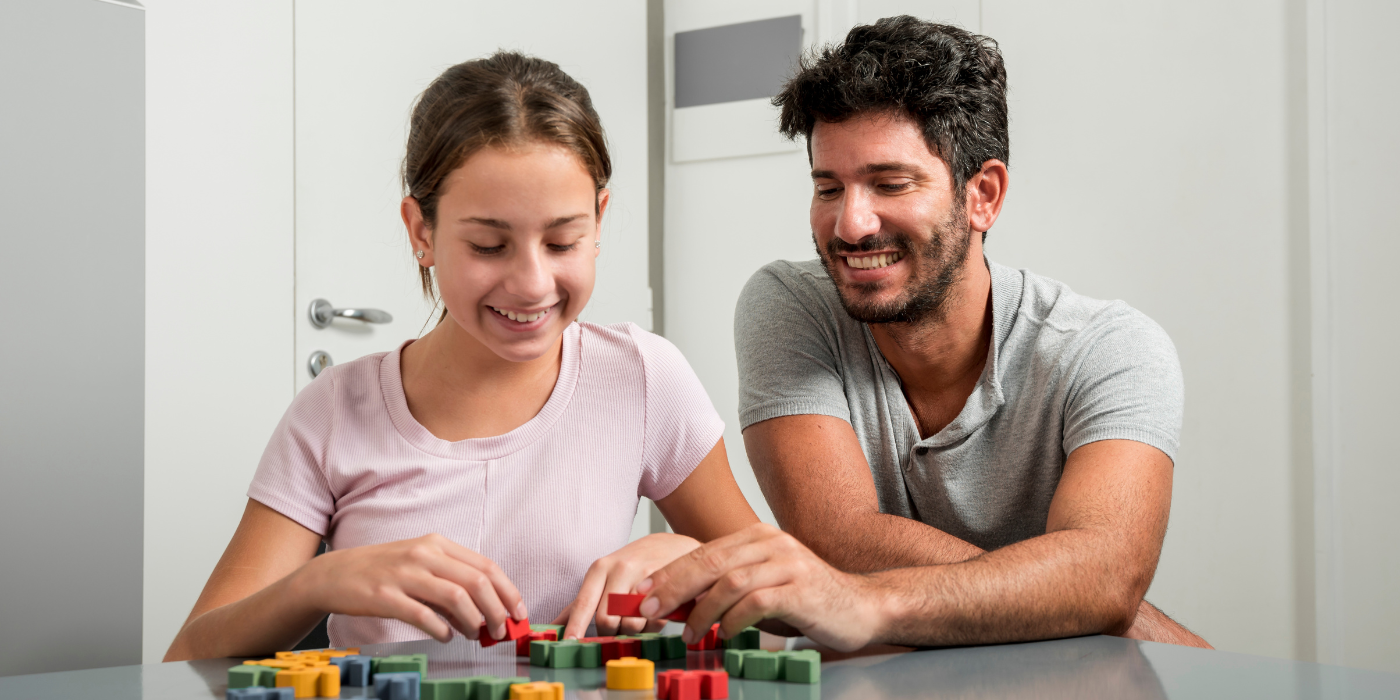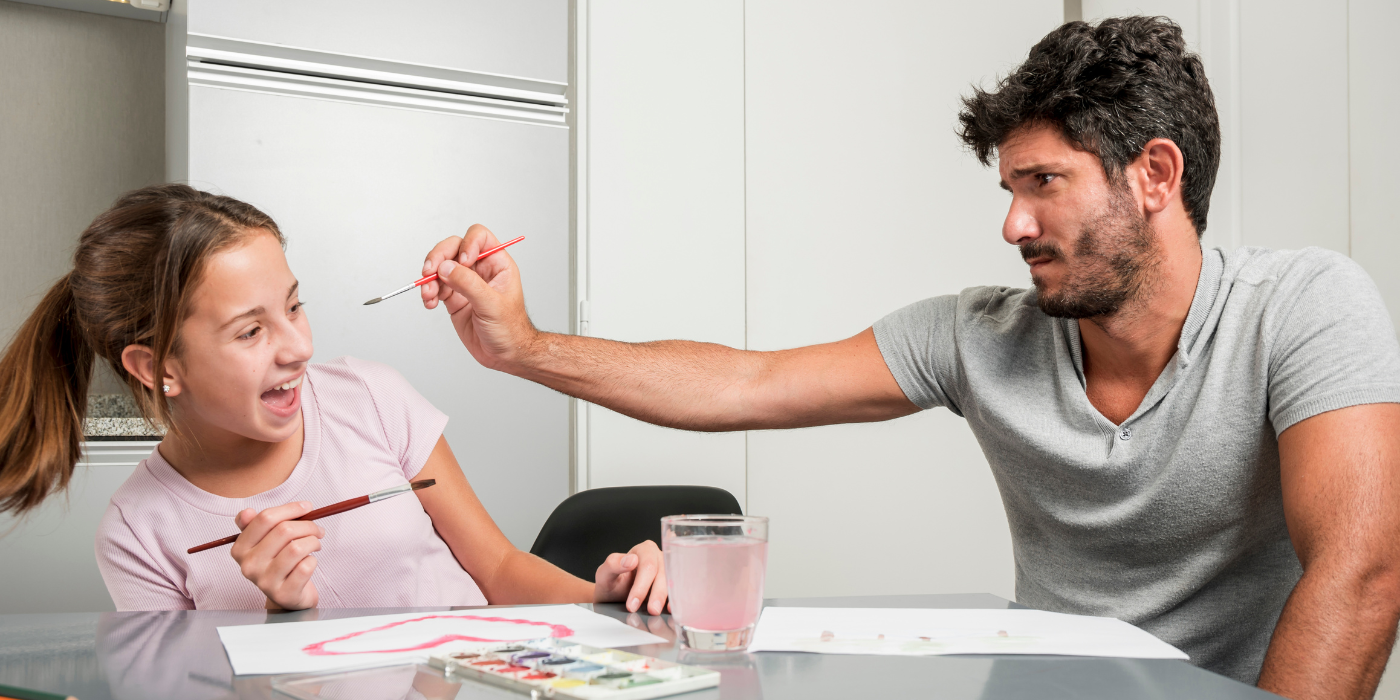P
Hello, Wonderful Parents! We’re here to chat about something super important: your child’s feelings. Yep, those little emotions that can sometimes be like a rollercoaster – exciting, a bit wild, and full of ups and downs!
Think of your kiddo as a tiny explorer in the land of emotions. Every day, they’re figuring out how to express joy, frustration, and everything in between. And guess what? You’re their guide on this emotional adventure!
In this blog series, we’ll talk about what to expect as your little one grows, and we’ll share easy tips to support them along the way. From handling those cute toddler meltdowns to helping with first-day-of-school jitters, we’re here to make parenting a bit smoother.
Get ready for heartwarming stories, helpful tricks, and a closer connection with your kiddo. It’s like a little roadmap for this emotional journey we’re all on. So, parents, let’s dive in together and make the ride a whole lot more fun! 🚀
Exploring Your Child’s Feelings: A Roadmap with Playful Tricks!
0-3 months: Feeling the Basics
- In the first three months, your baby is starting to show simple emotions like joy, anger, and fear. They express these through cries, smiles, and little movements.
- Did you know that newborns can mimic facial expressions within hours of being born? Try making different faces and see if your little one tries to copy you – it’s a cute bonding moment!
Tip: Use a soft, soothing voice to comfort your baby when they express emotions. They’re learning to recognize your voice and find comfort in it.
3-12 months: Finding Themselves
- As they grow, your baby begins to notice different feelings and starts to recognize themselves. It’s like they’re figuring out who they are and what those feelings mean.
- Create a little “feelings mirror” using baby-safe mirrors. Point to your baby’s happy face and say, “Look, that’s you feeling happy!” It’s a simple way to introduce the concept of emotions.
Tip: Sing songs with different emotions, like happy tunes during playtime and calming songs before bedtime. Music is a fantastic way to connect with your baby’s emotions.
12-24 months: Talking and Playing with Feelings
- Around the second year, emotions really take off! Toddlers use playtime to act out their feelings with toys, and their talking skills get a boost, helping them say what they feel.
- Toddlers love imitating! Set up a mini “emotion station” with stuffed animals to role-play different feelings. It’s a playful way for them to express what they’re experiencing.
Tip: Use simple words to describe your toddler’s emotions. For example, “I see you’re happy because you’re laughing!” This helps build their emotional vocabulary.
2-5 years: Emotions Get Fancy
- Between 2 and 5 years old, emotions become more complicated. Your child starts feeling things like empathy, shame, and guilt. Social play and experiences become super important, shaping how they deal with emotions and others.
- Kids in this age group are like little sponges, absorbing everything around them. Encourage empathy by talking about how characters in their favourite books or shows might be feeling. It’s a sneaky way to teach them about others’ emotions.
Tip: Create a “feelings chart” together. Draw faces expressing different emotions, and let your child point to the one that matches how they feel. It’s a visual way to open up conversations about emotions.
Understanding these stages and trying out these tips makes the emotional journey even more exciting for both you and your child.
The Emotions Ride in Early Childhood:
- Happy Highs and Tricky Lows: Early childhood is like a big feelings ride, full of happy highs and tricky lows. Kids get super excited about new things but sometimes feel frustrated when they can’t say what’s on their minds.
- Mixed Feelings for Parents: Watching your child’s emotions is sometimes super sweet and sometimes a bit tough. They go from being super happy exploring to feeling a bit sad because they can’t always talk about what they want.
- Understanding Tantrums: When toddlers throw tantrums, it’s not because they’re naughty. It’s just that big feelings can be a lot for little ones. Knowing this helps parents deal with the ups and downs of the emotions ride with lots of patience and understanding.
Riding this emotions rollercoaster is part of the parenting adventure, and knowing it’s all normal makes the journey a little smoother.
Guiding Kids Through the Feelings Maze:
Create a Safe Spot for Feelings:
- Make a cozy space where kids feel safe talking about their feelings.
- Did you know? Having a special “feelings corner” with comfy pillows and soft blankets can make sharing emotions even more inviting. Let them share how they feel, and tell them it’s totally okay to have all sorts of emotions.
- Tip: Introduce a “Feelings Jar.” When your child feels a certain way, let them pick a coloured paper slip from the jar that matches their emotion. It’s a fun way for them to express and share what’s going on inside.
Teach Ways to Feel Better:
- When emotions get big, teach kids simple tricks to help.
- Did you know? Blowing up a balloon and then slowly letting the air out can be a calming activity for kids. Try deep breaths, counting to ten, or finding a quiet spot. These tools give kids the power to handle their feelings on their own.
- Tip: Create a “Calm Down Kit” together. Fill it with their favourite toys, a soft blanket, and a little note from you. It becomes their secret weapon for tough moments.
Show How to Express Emotions:
- Kids learn a lot by watching you. Share your feelings and show how you deal with challenges.
- Did you know? Drawing or doodling when you’re upset can be therapeutic. This helps them see how to talk about emotions in a good way.
- Tip: Make “Feeling Faces” together. Draw different expressions on paper, cut them out, and use them to talk about emotions. It’s a creative way to open up conversations.
Cheer for Friend Time:
- Hanging out with friends is awesome for emotions.
- Did you know? Playdates and group activities help kids learn about teamwork and sharing.
- Tip: Encourage playdates, group games, and doing things together. These experiences help kids figure out how to handle all the feelings that come with friendships.
These fun facts and tips can make the journey through the feelings maze even more enjoyable for both parents and kids!
Building Emotional Smarts in Kids: A Simple Guide
Expressing Feelings: Naming Emotions in Simple Steps
Know Your Emotions:
- Help your child understand and name their feelings. Give them words for what they’re feeling, so they can express themselves better.
- Tip: Make it a game! Draw emojis together or use pictures to show different emotions. It’s a fun way to learn and talk about feelings.
Express with Art and Play:
- Encourage creativity to express emotions. Whether it’s drawing, playing make-believe, or using toys, these activities help kids show and understand their feelings in a playful way.
- Tip: Create a “Feeling Journal.” Ask your child to draw or write about their day, highlighting how they felt during different moments. It’s a visual record of their emotions.
Building emotional smarts is like a little adventure, and these simple steps make it both fun and meaningful!
Teaching Empathy in Easy Steps:
Chat About Feelings:
- Talk to your child about how others feel. Ask questions that make them think about different points of view. This helps them understand and care about what others might be going through.
- Tip: Pick a movie or story with characters facing different situations. Ask your child how they think the characters feel. It’s a cool way to make empathy a part of everyday conversations.
Connect to Real Life:
- Use everyday situations to help your child relate to how others feel. Talk about people they know or share stories to show that everyone has different emotions.
- Tip: Share your own experiences and feelings. It could be a simple moment from your day. This helps your child see empathy in action and learn from your example.
Empathy is like a superpower that makes the world a kinder place. Let’s help our kids unlock it!
Helping Kids Become Problem Solvers:
Fun Problem-Solving Games:
- Try out activities that turn problem-solving into a game. Break down big challenges into smaller ones, help your child think of different solutions, and cheer them on as they pick the best way to solve it.
- Tip: Turn everyday tasks into mini problem-solving adventures. Whether it’s planning a snack or organizing toys, involve your child in making decisions.
Show and Tell:
- Be a problem-solving superhero! Share stories from your life where you faced challenges. Explain the steps you took to fix things, so your child learns how to tackle problems too.
- Tip: Keep it simple. Share a story about fixing a leaky faucet or planning a family outing. This helps your child see problem-solving as something they can do too.
Making problem-solving fun and relatable is like giving your child a superpower for handling challenges!
Listening to Your Child: A Simple Guide
Pay Attention and Respond:
- Practice active listening by looking at your child, nodding, and answering appropriately. Repeat back what they said in your own words to show you understand and care about their feelings.
- Tip: Use simple phrases like “I hear you” or “That must have been tough” to let your child know you’re really listening.
Keep the Door Open:
- Make your home a safe space for talking. Encourage your child to share their thoughts and feelings without worry. Trust is key for good listening.
- Tip: Set aside special times, like dinner or bedtime, for chatting. It creates a routine where your child feels comfortable opening up.
Listening might seem simple, but it’s a powerful way to build a strong connection with your child. 🌟💬
Knowing When to Get Help for Your Child’s Emotions
Sometimes kids’ emotions go up and down, which is normal. But it’s essential to keep an eye out for times when your child might need extra support. Let’s look at some signs that could mean it’s a good idea to talk to a professional.
Watching Your Child’s Behavior: Signs to Look For
How Long and How Strong:
- Keep an eye on how long and how strong any changes in your child’s behaviour last. Everyday ups and downs are normal, but if there are persistent shifts like sudden anger or wanting to be alone, it’s good to pay attention.
- Tip: Think about any big changes in your child’s life, like moving or family stuff. Sometimes, these changes can make behaviour a bit different.
Considering Their World:
- Think about what’s happening in your child’s world. If there have been big changes like moving to a new place, family shifts, or starting a new school, these things can impact behaviour.
- Tip: During these times, getting a bit of extra support can make things smoother for your child.
Watching out for these signs helps you understand what might be going on with your child and how to support them better. 💚👀
Understanding Your Child’s Social Behaviour: What to Look For
How Often and Where:
- Notice how often your child avoids social situations. A bit of shyness now and then is usual, but if they regularly steer clear of others, it might be a sign of something more.
- Tip: Think about where this happens. Is it in specific situations or places? Understanding the context can give you clues.
Talking with Teachers:
- Have a chat with your child’s teachers or caregivers. Getting insights into how your child acts around others in different places helps build a complete picture.
- Tip: Team up with educators at home and school to understand and support your child’s social world better.
Keeping an eye on these things helps you connect with your child’s social experiences and figure out the best ways to support them. 🌟💙
Understanding Your Child’s Big Feelings: What to Look For
How Often and How Big:
- Pay attention to how often your child has really strong feelings. It’s normal to feel super happy or really upset sometimes, but if these feelings happen a lot, like long-lasting sadness or lots of big tantrums, it’s worth keeping an eye on.
- Tip: Think about what makes these feelings happen. Are there specific things that set off these big emotions?
Figuring Out Triggers:
- Try to understand what might be causing these strong emotions. Look for patterns and what usually happens before your child has these big feelings.
- Tip: Recognizing triggers helps professionals know how to help and support your child better.
Keeping track of these things gives you a better idea of your child’s emotional world and helps you know when to get extra support. 🌈💛
Taking Action to Support Your Child: What You Can Do
Talk to Teachers and More:
- Keep the lines of communication open with teachers, counselors, and healthcare providers. Regular chats help catch any concerns early and allow everyone to work together to help your child’s emotions.
- Tip: Set up regular check-ins to share updates and make sure everyone is on the same page.
Consider Professional Help:
- If your child’s behavior or emotions are still causing worry, think about getting assessments from experts like child psychologists or therapists. They can figure out what’s going on and suggest ways to help.
- Tip: Don’t hesitate to reach out. Professional evaluations can provide valuable insights.
Make It a Family Thing:
- Get the whole family involved in supporting your child. Team up with caregivers, teachers, and professionals to create a strong system that covers all aspects of your child’s emotional needs.
- Tip: Share what’s happening at home and listen to insights from others. It’s a combined effort to make sure your child gets the best support possible. 🤝💙
Conclusion:
Parenting is an adventure full of ups and downs, and understanding our child’s emotions is the key. It’s like riding a rollercoaster of emotions, and that’s perfectly normal! By keeping an eye on behaviour, staying connected with teachers, and involving the whole family, we create a supportive environment. Seeking help when needed is a strength, not a weakness. Together, we’re building a resilient foundation for our children, filled with love and positive vibes. Here’s to the journey of parenting, filled with smiles and happy memories!







